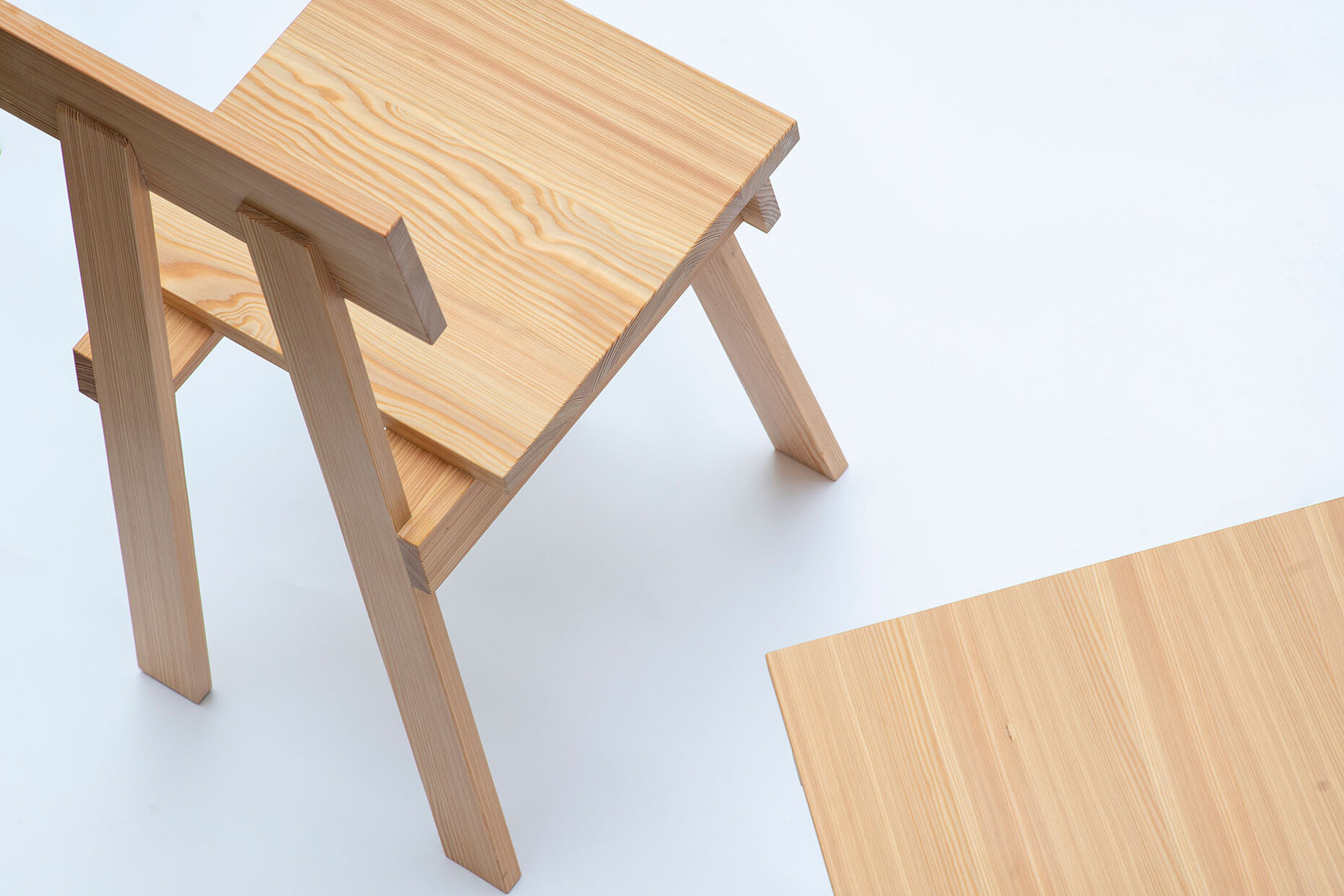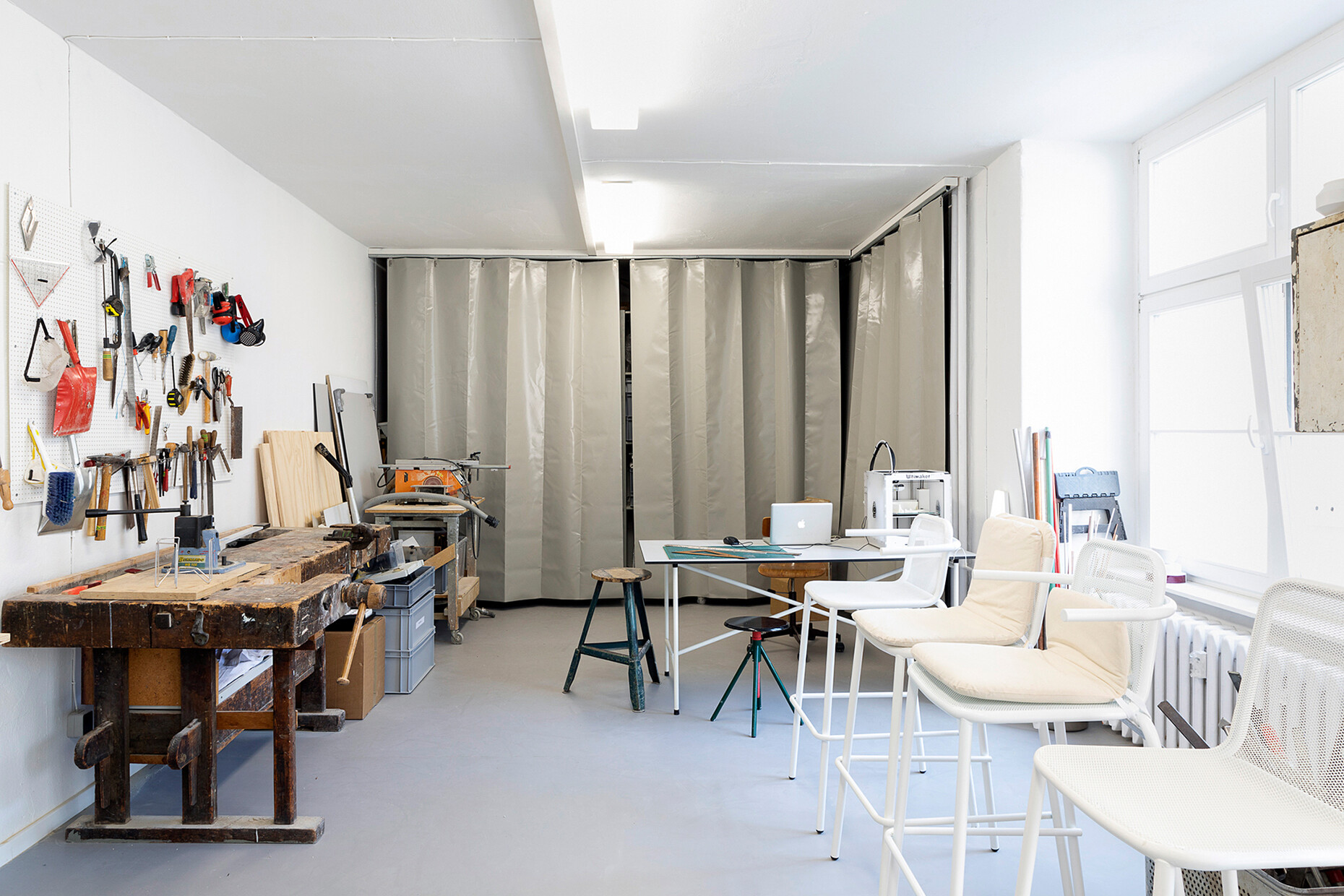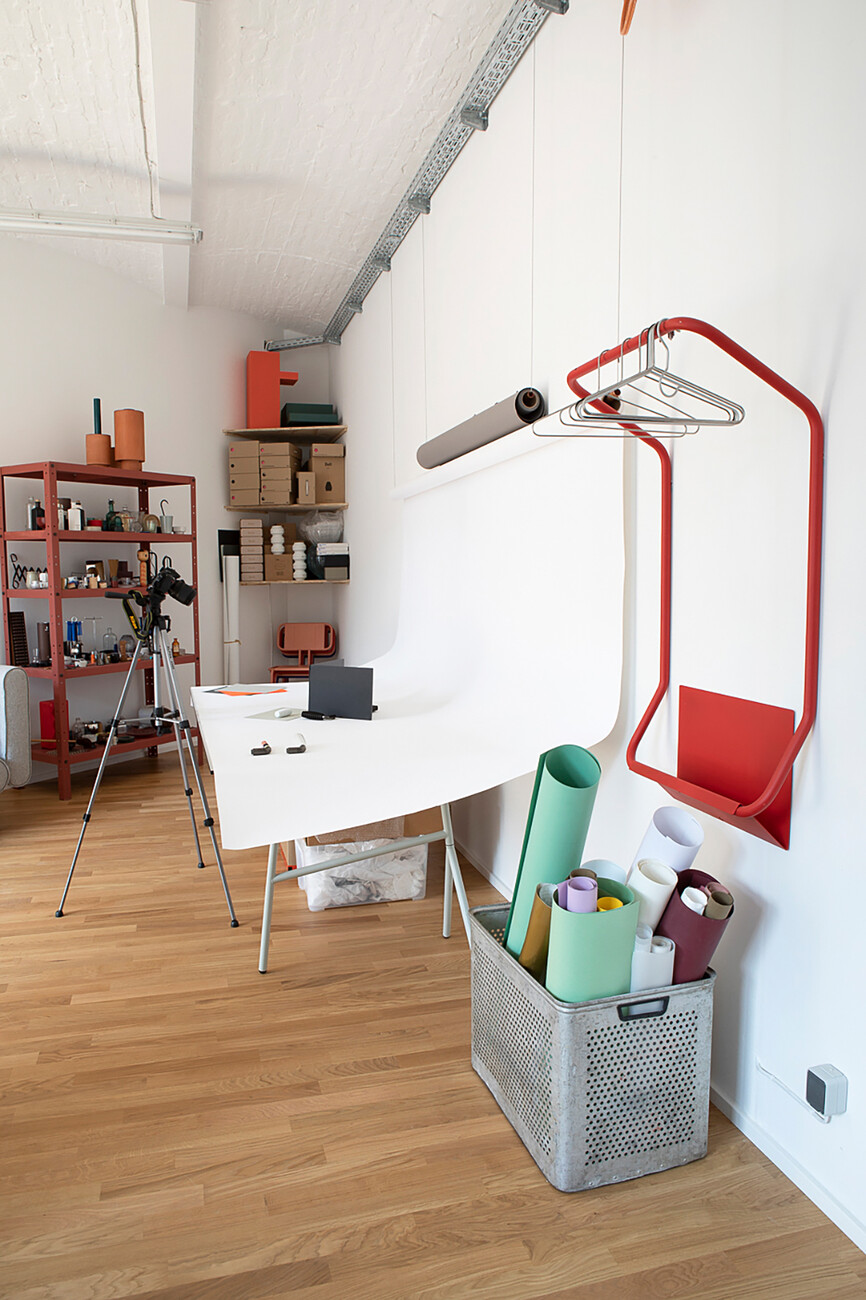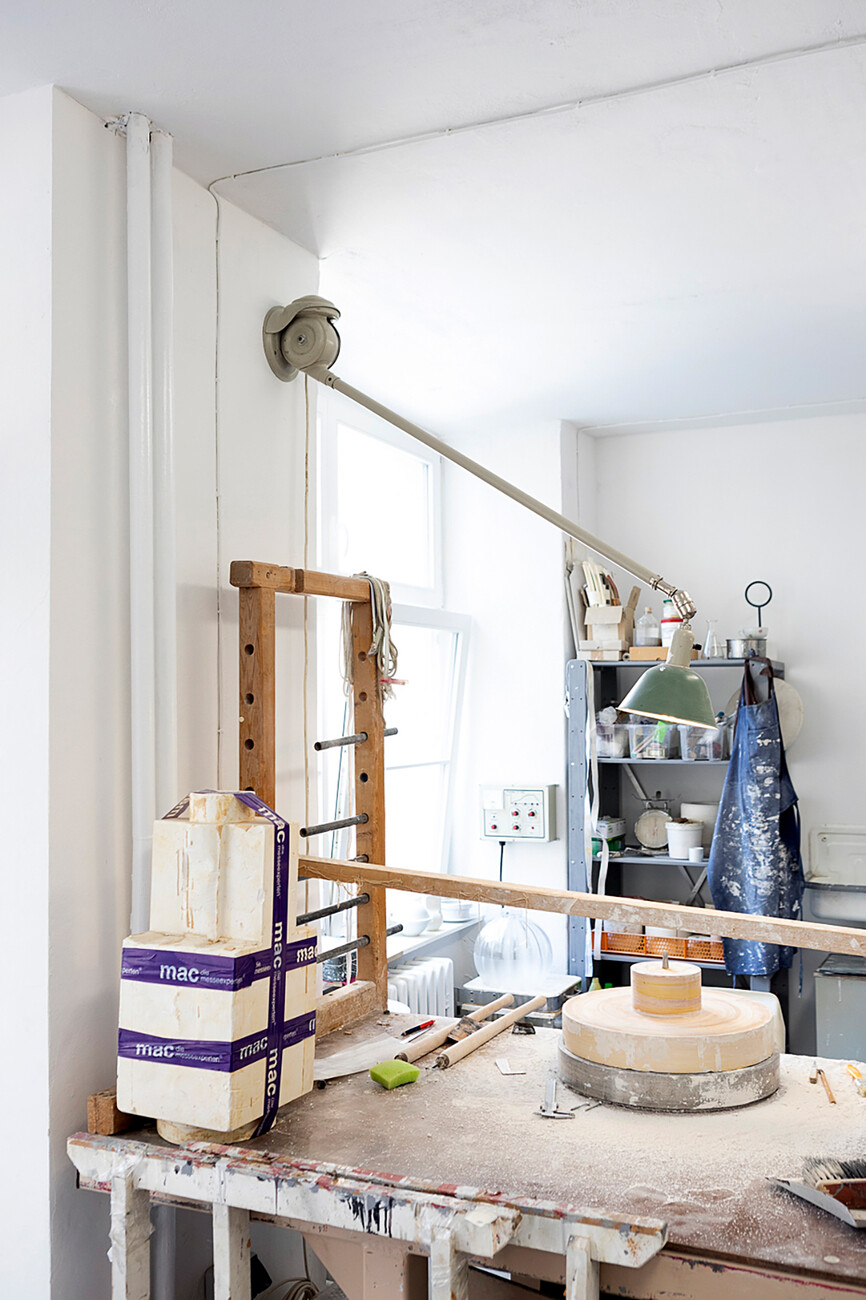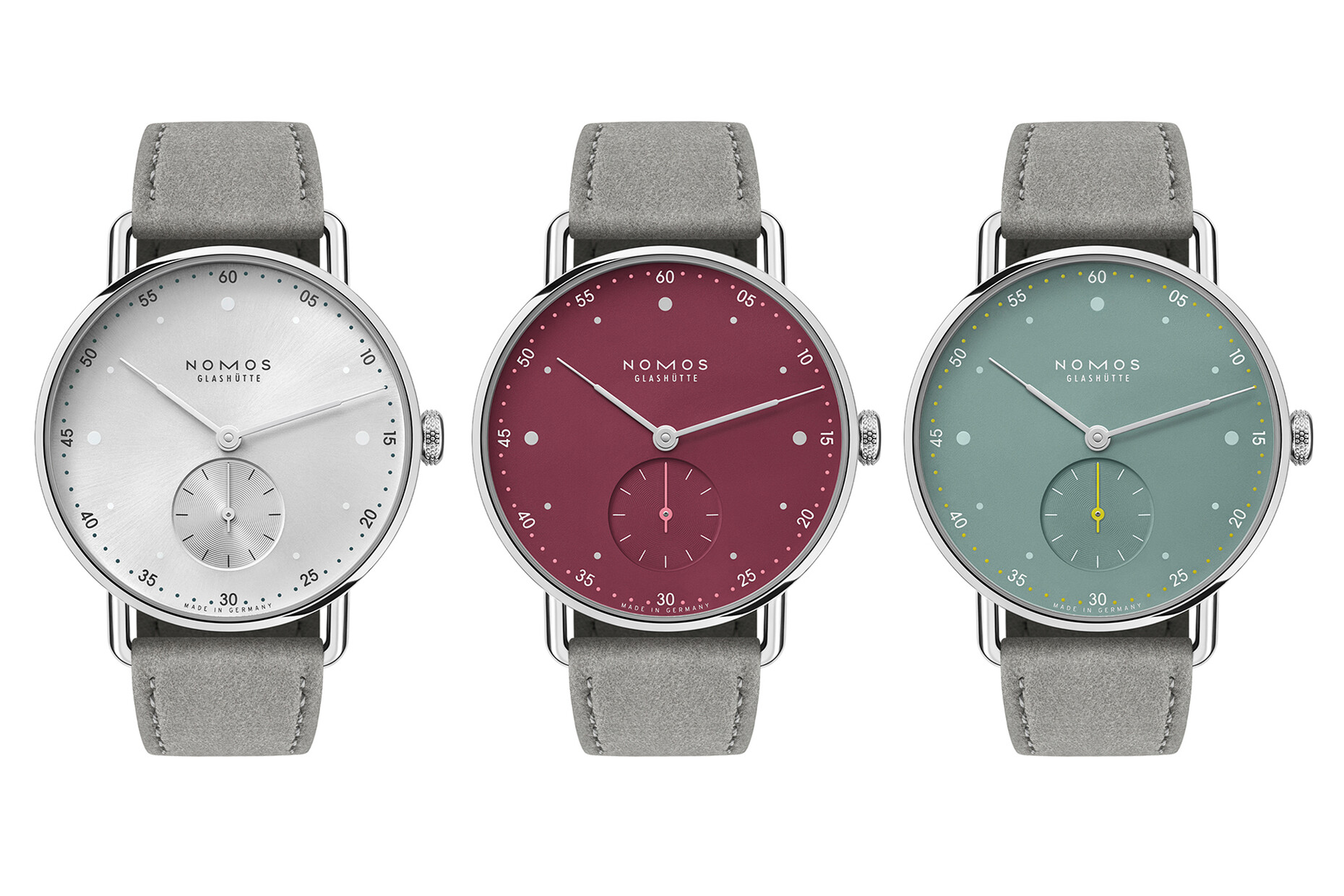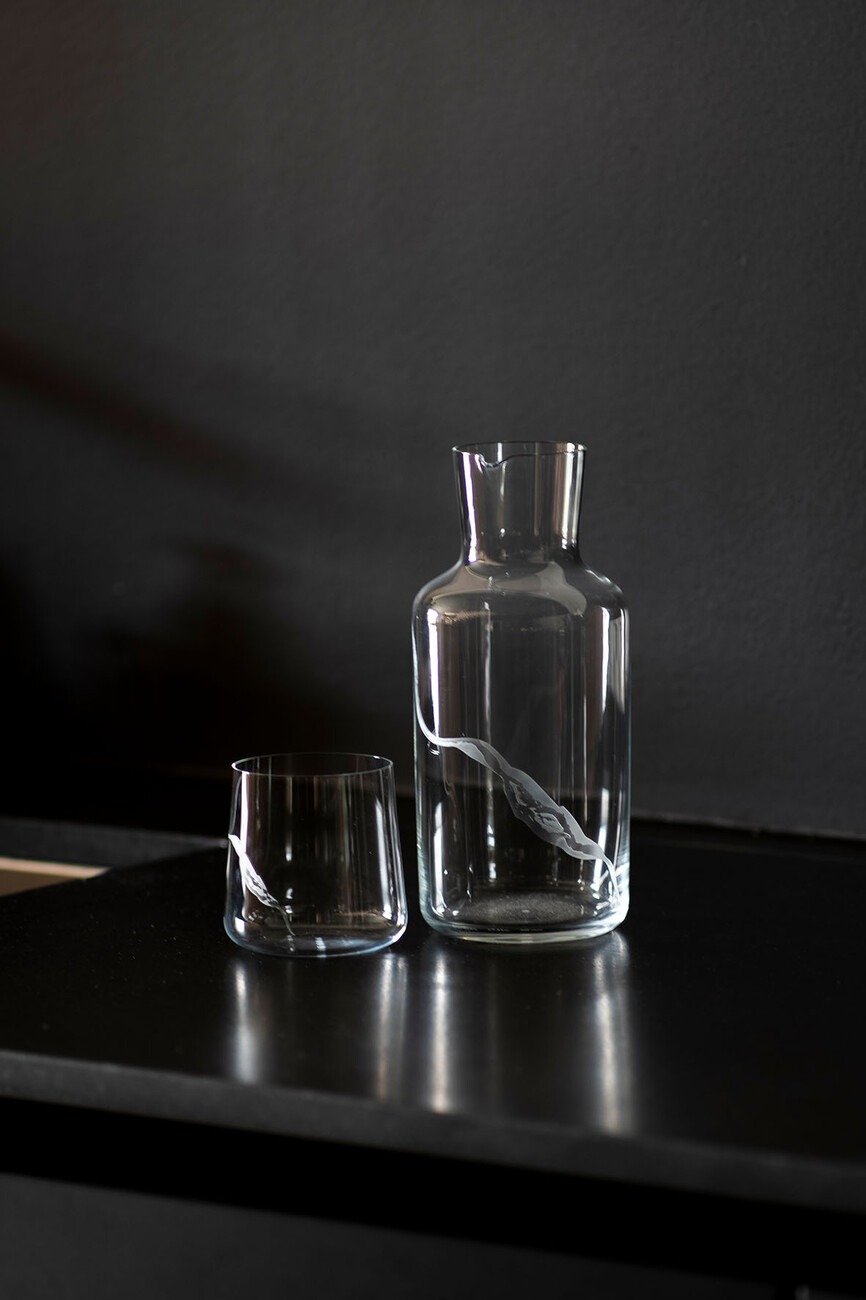Idealism Meets Pragmatism
It is quite possible that he was born with an affinity for design: Mark Braun comes from a family in which his grandparents were architects and his mother was a crafts teacher. What better prerequisites could there be for a creative career. After training as a cabinetmaker and industrial designer in Berlin, Halle, Eindhoven, and Potsdam, Mark Braun moved into his own studio and workshop in Berlin in 2006. After guest professorships at various universities such as Burg Giebichenstein University of Art and Design Halle and ECAL Lausanne he was appointed Professor for Product and Industrial Design at HBK Saar in 2015.
As a guest in his studio in a former piano factory in Berlin Alt-Treptow, the first thing you notice is the relaxed team atmosphere and the very next moment the colorful jumble in the room. Masses of material samples, art objects and mock-ups make it abundantly clear that things get created here. In addition to beautiful and useful everyday objects, from wristwatches and fountain pens to cutlery, Mark Braun and his team also design jewelry, furniture, and lighting. He has been highly successful, as attested to by the large number of awards he has received. In addition to aesthetics and function, themes such as durability, sustainability, and gender-appropriate design also play an important role in the studio projects.
In conversation with Mark Braun
Linda Pezzei: How do you generally work in your studio?
Mark Braun: There are usually four projects that we’re actively working on any given time. In addition, there are around ten projects that we are chiseling away at. In this sense, I see myself as both a designer and creative manager of design projects. With my studio, I tend to partner with owner-managed companies – it’s often difficult in larger corporations to reach the decision-makers directly. We are currently designing cutlery, watches, razors, and fountain pens for around five companies, along with measuring instruments for Fischer and furniture for Echtstahl. We also love to work with smaller labels or traditional workshops such as Lobmeyr. It is particularly important to me to have a close relationship with the owners: I prefer mutual commitment to some one-hit wonders. It's particularly exciting to tap into the partners’ respective skills and markets. That doesn't happen overnight, but bit by bit. Other jobs come about because brands simply collect studio design. Sometimes a nice, quick project can also have a very vitalizing effect.
What do individual projects like the Aura Karwendel mean to you?
Mark Braun: Aura Karwendel is a guest house in Scharnitz in Tyrol. It was a real fast-moving project and therefore a really special and cool project. We created a small number of selected products for a special place. In general, such projects can of course also result in a new mass product; that said, such a job frees us from having to think of mass rollouts because a focus on the margins unfortunately often proves to be a difficult hurdle for design “Made in Germany” to take. In my opinion, mutual respect and trust are more important than earning big money alone. Thanks to my cabinetmaking apprenticeship in Berlin, I still have numerous contacts from the past – including Werkstätten Weissensee, which has already realized projects for Olafur Eliasson. It was also important to the client, Thomas Prantl, that we bring an experienced partner on board with said collective in order to avoid any loss of quality when realizing the idea. In the end, Thomas was so taken by it all that several products found their way into the Aura Karwendel – such as glasses and carafes for Lobmeyr with a limited engraving edition of the Isar meadows, the new “KARL” furniture series, and the bar chair from Northern. All in all, a very lively project.
Can products like “KARL” transition from one-off to mass production?
Mark Braun: In general, yes, if you find an manufacturer who’s interested. With “KARL”, however, we are thinking more of direct sales in the sense of on-demand orders in cooperation with Werkstätten Weissensee. A dealer margin would potentially make the product unviable. Moreover, the design was created in an effort to use locally found waste wood as furniture material, and that could’ve become an even bigger issue going forward. Another exciting project was our design for Domotex 2023 in Hanover, Germany. There, we had the opportunity to design one of the five Mood Spaces alongside Sebastian Herkner and Studio Besau-Marguerre under the motto “Floored by Nature”". In our mood space, we sought to underscore the connection between natural and industrial processes and show that they can meld for all their differences. Our cooperation partner Kvadrat provided us with the appropriate fabrics for the curtains, which were hand-dyed as cyanotypes. Once again, we made a new contact, and this could ultimately lead to a mass product.
You are also a professor at the HBK Saar. What is particularly important to you in design and teaching?
Mark Braun: As a designer, I naturally have ideals and ask myself how I can link these with reality. The origin of the materials is very important to me, which is why projects relating t urban mining are so topical in my opinion. As part of a third-party funded project, we collect recyclable materials from industry in order together with social workshop facilities to transform them into products such as furniture for daycare centers or public spaces. I call this upcycling outside the mainstream. The great thing about the university is that we can combine social issues with design.
However, I also see the future of design in the products that you can buy in stores. My wish is to train designers so that they can use the powerful tool of design in a positive way. We must try to prevent material waste and create sustainable, functional, but also beautiful products that do justice to today’s issues. In my courses, with this aim in mind students acquire the methods to move confidently between craft skills and industrial production, innovation and tradition in the design process. Our art academy, the HBK Saar, has the ideal infrastructure for this in the form of motivated teachers and modern workshops. At the moment, for example, my students are working on the “In Serie” project, a collaboration with “AW Architektur & Wohnen” magazine, and are independently producing small series in which they are rethinking standardized processes and material cycles. The results will go on display at the Ambiente trade fair in Frankfurt next January, if anyone is interested. I see myself as a down-to-earth pragmatist with ideals, albeit not ones I follow dogmatically, as they can also prove to be a drag on things.
What do you think German design needs at the moment?
Mark Braun: I perceive two worlds: There’s one group which longs for a beautiful living environment where they can stream their series. And there’s another which is very committed when it comes to topics such as sustainability, greenwashing, and the like: It wants brands that it can trust. In my opinion, German design needs a bit of both worlds: opulence and awareness. It will be increasingly important to create circular value-added chains. For me, it’s less about sitting on a moral high horse and more about setting a trend whereby we consumed fewer, but high-quality products instead of many cheap products. The issue of reparability should also be given more recognition again.
Otherwise, to my mind there are too many design universities and consequently too many designers in Germany. I would certainly be in favor of closing some of the non-functioning university locations, even if it calls my own profession into question. However, I also see untapped potential in the fact that designers, as experts in an interface discipline, do not delve enough into interdisciplinary areas. We need to work on bringing the two sides together here, as we are increasingly doing with the German Design Graduates Platform run by the German Design Council, which I co-initiated. What I also observe is a tendency among many young people today who would rather save the world than design beautiful products that boost consumerism. Design is and remains diverse.


